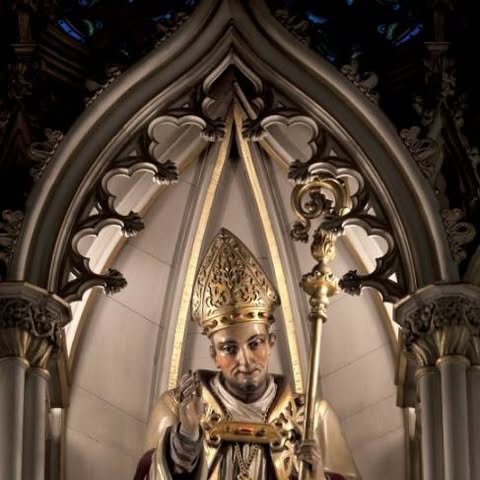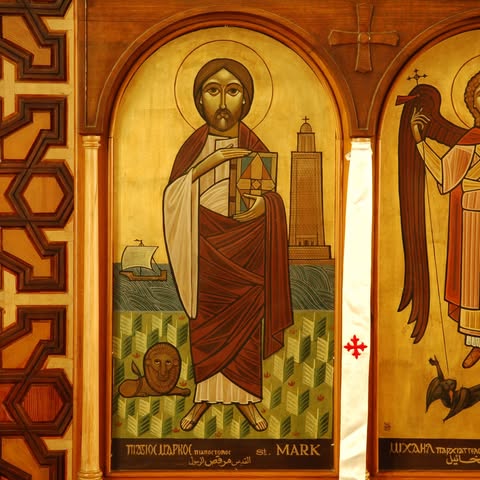
The Gregorian Society of Baltimore
This page is a page dedicated to providing information to friends, and supporters of the Latin Mass community at the National Shrine of St. Alphonsus. The Shrine has been entrusted to the FSSP. The Gregorian Society of Baltimore is organized for a religious purpose-to work for the wider use of the Traditional Roman Catholic Latin Mass and to support the offering of the Traditional Roman Catholic Latin Mass in the Archdiocese of Baltimore.

ICO
521909437
3400
Web
Sign in to see organisation website
Address
Ellicott City
The Gregorian Society – Ad Altare Dei "To the Altar of God" The Gregorian Society Ad Altare Dei. org is the online home for The Gregorian Society of Baltimore. The society was founded to preserve and foster the Traditional Latin Mass Traditional sacraments and ceremonies of the Roman Rite within the Catholic Archdiocese of Baltimore. The Society is loyal to the Magisterium of the Roman Catholic Church and functions with the approval of the Baltimore Archdiocese.
From Social media
News about from their social media (Facebook and X).
She spent the last thirty years of her life in exercises of prayer, almsgiving, night vigils, fasting, and penance, seeming to forget that she had been queen. June 3rd, Feast of Saint Clotilda, Queen of France, († 545 AD) Saint Clotilda was the daughter of Chilperic, the Catholic King of Burgundy, domain of the Germanic tribe which had entered the southeastern region of ancient France in the fifth century; Chilperic had succeeded his father in that royalty. His jealous older brother, infected with Arianism, declared war on him, surrounded him with an army, captured and slew his own brother and his brother's wife and two sons, while sparing the two daughters, then took over their dominions.
Like Comment
Data about organisation
Religious Related, Spiritual Development N.E.C. Category
Organisations with similar rank to The Gregorian Society of Baltimore in category Religious Related, Spiritual Development N.E.C.

2021. Emerald of the Sea International
Leading survivors of sexual trauma & exploitation to the Hope, Healing, & Freedom in Jesus Christ.

Journey for Freedom 501c3 provides in person & online services focused on helping families thrive.

2023. The Gregorian Society of Baltimore
This page is a page dedicated to providing information to friends, and supporters of the Latin Mass community at the National Shrine of St.

2025. Life Partners Christian Ministries, Inc.
Guiding men to exemplify Christ through Bible based marriage counseling and leadership training; allo.
Ellicott City
Organisations from The Gregorian Society of Baltimore

19. GLENELG COUNTRY SCHOOL INC
Glenelg Country School is a co-ed, independent, college preparatory school, age 2 through grade 12 i.

Bengali Community of Washington DC Metro Area.

21. The Gregorian Society of Baltimore
This page is a page dedicated to providing information to friends, and supporters of the Latin Mass community at the National Shrine of St.

This page is a page dedicated to providing information to friends, and supporters of the Latin Mass community at the National Shrine of St.

Players Against Hate is determined to increase awareness and stop racism and name-calling by youth athletes, their teams and coaches, their families, and spectators.
Similar organisations
Similar organisations to The Gregorian Society of Baltimore based on mission, location, activites.
More Similar OrganisationsSimilar Organisations Worldwide
Organisations in the world similar to The Gregorian Society of Baltimore.

St Michael and All Angels The Church of England in Houghton Le Spring Safeguarding: to see how we create a safe church, including people who can be contacted if you have concerns, please click on this link: https://stmichaels-hls.

Alphington church offers a warm welcome to people of all ages.
Interesting nearby
Interesting organisations close by to residence of The Gregorian Society of Baltimore

PRANTIK was established in 1973 to meet the needs of a growing Bengali Community in the Baltimore Metropolitan area.

Religion, Education, Community.

The Gregorian Society of Baltimore
This page is a page dedicated to providing information to friends, and supporters of the Latin Mass community at the National Shrine of St.
Similar social media (3400)
Organisations with similar social media impact to The Gregorian Society of Baltimore

Lutherans in Africa was founded in 2010 to aid in teaching of the confessional Lutheranism.

98676. Indiana Adoption Network Inc
National Association of Adoptees and Parents (NAAP) is a 501c3 educational organization.

98677. The Gregorian Society of Baltimore
This page is a page dedicated to providing information to friends, and supporters of the Latin Mass community at the National Shrine of St.

98678. Mud Brothers of the North Atv Club
We are a federal non profit atv/utv riding club, we hold many great events and rides.

The Big Horn Rodeo Circuit is comprised of 9 rodeos in the Big Horn Basin of Wyoming.
Join us and make a difference for the future!
Sign Up
Please fill in your information. Everything is free, we might contact you with updates (but cancel any time!)
Sign in with Google










